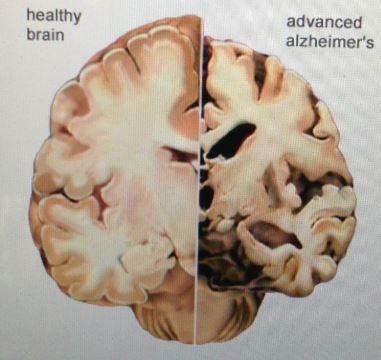Fungal Infections Found in Alzheimer Patient's Brains
A shocking new discovery! Numerous fungal species found upon autopsy.
Alzheimer’s disease (AD) affects more than 6 million Americans, with the majority of those being 65 and older.
Proteomic analysis of brain tissue from patients diagnosed with Alzheimer’s indicates evidence of fungal proteins.(2) Of those, the most common species were identified as Candida spp., Malassezia spp., Cladosporium spp., and Alternaria spp.(1) These species are all opportunistic microorganisms that infect immunocompromised patients, making Alzheimer’s patients an ideal host. This disease primarily affects those 65 and older due to a weaker immune system, as well as potential changes in diet and hygiene.(3)
The question that demands further study is whether or not these fungal infections are the cause of AD. Fungi can lead to a variety of systemic disruptions, including neuroinflammation and neurodegeneration, which can lead to amyloid plaque formation in the brain.
With the disturbances that these fungi present, it is highly possible that chronic fungal infections could be a significant contributor to the degenerative effects of Alzheimer’s disease. A study conducted analyzing brain sections from eleven patients with Alzheimer's - plus three additional control patients, and four patients previously analyzed - found that all the Alzheimer’s patients were infected with fungi, while all the controls were not.(3)
Fungal elements were found in all the Alzheimer brains tested, but none in the controls.
In this study, chitin bodies were found using immunohistochemistry, PCR, and DNA sequencing in the brains of Alzheimer's patients. Chitin is a key component of the fungal cell wall, indicating the possibility that these chitin polysaccharides may originate from fungi. In some cases entire cells of Candida spp were found (shown in photo above). The same study found no fungal elements in the brains of the normal control patients. (3)
Using the same techniques as above, another research group found multiple bacteria and fungi in the brains of Parkinson's patients upon autopsy. Most of the fungal species identified belong to the genera Botrytis, Candida, Fusarium and Malassezia. Some relevant bacterial genera were Streptococcus and Pseudomonas, with most bacterial species belonging to the phyla Actinobacteria and Proteobacteria. (4)
Furthermore, there are other sources of evidence to support the idea that fungi may be contributing to the effects of Alzheimer’s disease, including how the slow progression of the disease fits the nature of untreated fungal infections.(3) These untreated fungal infections can multiply and slowly spread throughout the central nervous system (CNS) eventually leading to the debilitating symptoms observed in Alzheimer’s patients.
Yet another group of researchers found that the common antifungal drug, miconazole, reduced the symptoms of neurodegenerative disease and significantly reduced cognitive impairment in a mouse model; thus, further implicating fungal infections as a cause of AD. (5)
Overall, there is evidence to suggest the presence of fungi found in the brains of Alzheimer’s patients compared to patients without Alzheimer’s. Due to the opportunistic nature of these microorganisms and the compromised immune systems of Alzheimer’s patients, fungi may spread throughout the CNS and contribute to or even cause the adverse symptoms of Alzheimer’s disease.
by Margaux Hanson and Anna Klavins
Technical Services Department, Hardy Diagnostics
Meet the author

SENIOR TECHNICAL SERVICES AND R&D MANAGER at HARDY DIAGNOSTICS
Anna Klavins, RAC-Devices, B.S Cellular and Molecular Biology
Anna Klavins is the Senior Technical Services and R&D Manager at Hardy Diagnostics where she oversees the Research and Development, Design and Development, Quality Control, Technical Support, and Performance Studies teams. She earned a Molecular and Cellular Biology B.S. degree from Cal Poly San Luis Obispo while playing for the Division I NCAA women’s tennis team. Since joining Hardy Diagnostics in mid-2016, she has authored sixteen FDA 510(k) submissions for class II microbiology in vitro diagnostic devices. She has published in the Journal of Clinical Microbiology and the Journal of AOAC INTERNATIONAL, as well as presents in vitro diagnostic device performance evaluation results annually at global scientific conferences such as ASM Microbe, the AOAC Annual Meeting, and the International Association of Food Protection annual meeting. She is an advisor to the Joint CLSI-EUCAST Working Group and has earned the RAC-Devices certification.









